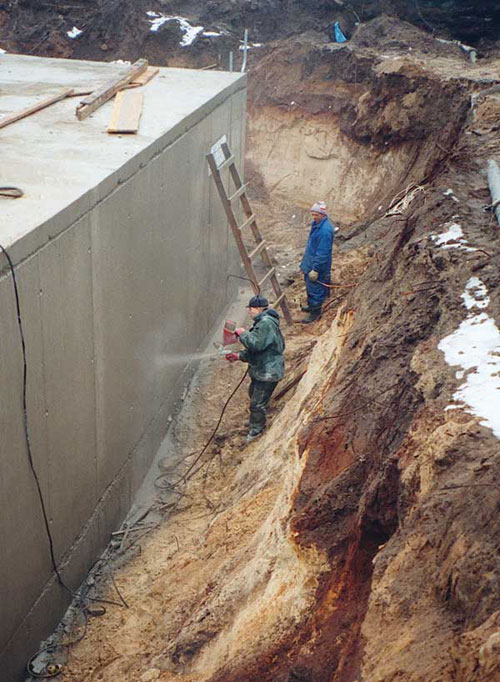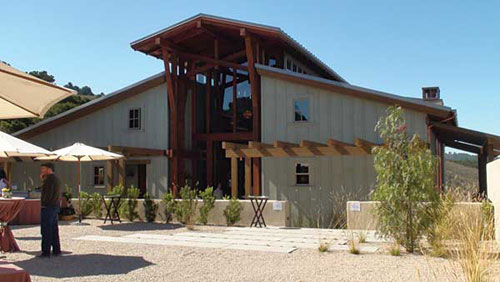Conserving Water for a Thirsty Planet
WATER RE-USE
Gray water is the recapture of water which has been lightly used in domestic or commercial equipment. Wash water, liquid waste and shower water can be recaptured, treated and re-used in irrigation, and in some cases, highly treated to be re-used in the domestic water supply. Managing stormwater is a design opportunity that can be openly celebrated and embraced, as in the unique stormwater art projects by Herbert Dreiseitl. Conversely, stormwater, wastewater and groundwater can cause damage to foundations, concrete basins, pools and slabs, creating a maintenance burden for facilities managers.
When water causes damage, repair mortor can be used for the patching and resurfacing of deteriorated concrete. Crystalline waterproofing mortars are formulated to produce, low shrinkage, chemical durability and strength when aplied to concrete surfaces. Some products are mixed with a cementitious slurry coat to above or below-grade concrete and applied on sealing strips at construction joints to repair cracks. Water damage at foundations can be repaired to resist extreme hydrostatic pressure. Crystalline coatings do not require a dry surface, and can be applied to the positive or the negative side of a concrete surface providing an integral part of a substrate in a water containment system.
As a preventative application, a crystalline dry shake application can be applied to horizontal concrete surfaces. The active chemicals of this dry powder react to the moisture of fresh concrete causing a catalysic reactin which generates a non-soluble formation within the pores and capillary tracts of the concrete. This application is recommended for sewage and water treatment plants, foundation slabs, bridge decks, below-grade parking and water reservoirs and can seal hairline cradks up to 0.4 mm. Some of the advantages of this application is that the concrete will have a greater resistance from extreme hydrostatic pressure from either positive or negative surfaces of the concrete slab and will be highly resistance to aggressive chemicals.
 |
Crystelline concentrate applied to the foundation wall of the corporate headquarters of Hektor S.A. Photo courtesy of Xypex Chemical Corporation |
Â
GLOBAL ISSUES
Entrepreneurs like T. Boone Pickens are betting that water may be the new oil10 and they are investing in private pipelines and buying up water rights. With an eight year drought in Western United States, a 280-mile pipeline which stretches from Lake Havesue to Tucson, there is no doubt that water use and conservation is serious. Data shows that across the world, water is a precious resource. As the annual rainfall in the United States has dropped, the population has increased. In the U.S. alone, water regulations both encourage water conservation and restrict water use in order to preserve our drinking water.
The conservation of water is among the greatest challenges of the future as this thirsty planet grows in population. Design professionals must continue to design buildings that are part of the water cycle and through an integrative design practice, restore water quality and conserve water resources.
The Monterey Bay Idea House |
Designed to showcase numerous sustainable design features, the Monterey House is an example of integrated water design including a constructed water conservation system under this entry forecourt. Photo courtesy of BTL Liners, Inc. Thirsty California has numerous water regulations and incentives to encourage designers to save water. The Monterey Bay Idea House, was designed and built to showcase sustainable design. Harvesting rainwater allowed the designers to increase the building footprint and add bathrooms. On this tight site, stormwater detention was accomplished through the installation of a gray water source used for toilets and irrigation. A 49-foot long x 39-foot wide and 6-foot deep excavation was installed with an impervious reinforced liner and 65 recycled containment chambers providing water storage. This system was covered with granular fill, stormwater drains and a pavement cap that is the parking area for the home. All runoff from the roofs and pathways is directed into this system through a filter into pump basins that can be directed for re-use as irrigation water |
Â
Â









